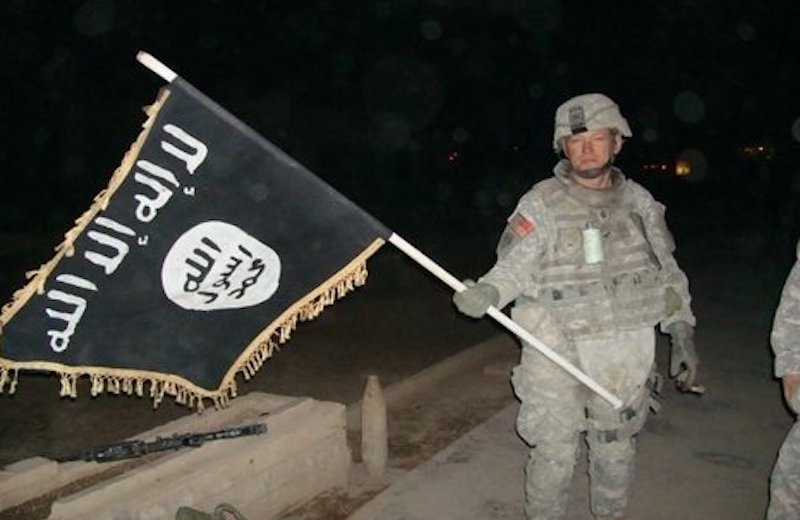How would the Islamic State’s propaganda would look like following the collapse of the physical caliphate?

By Asaf Day
Following the complete loss of all of its territories in Syria, many questions were raised concerning the Islamic State’s future activity. This includes the group’s strategy, tactics, geographic focus of operations, as well as its propaganda and the possible transformation of its communications and rhetoric. In this piece, I attempt to assess the latter aspect, as many analysts and experts have already focused on the organization’s more physical aspects of its future operations. Over the past months, the jihadist organization’s media branch has already set the ground for the “day-after”, as it began releasing content dealing with issues connected to the group’s setbacks in Iraq and Syria.
Theologically, the group is liable to continue portraying the setbacks as a divine test. In its 159 al-Naba newsletter, which was released on December 6, 2018, the Islamic State published an opinion piece expressing the importance of patience and reliance on Allah, despite the growing difficulties. The article provides examples from Islamic history and stresses the awaiting reward (both in this world and the afterlife) for those who continue to engage in jihad amidst the constant obstacles.
In addition, the Sunni jihadist militant group will likely underscore its ability to resurge. Indeed, the Islamic State can rely on recent history, as the group similarly re-emerged after the killing of its former leader Abu Umar al-Baghdadi in 2010 (when it was still called Islamic State of Iraq) and its marked decline in activity during that time. A good example of this appears in al-Naba 157, with the author reminding the group’s followers that the situation during that time was “much worse” in comparison to its current situation.
Another type of publications will likely address local Muslim communities. In a similar fashion to al-Qaeda, the Islamic State may portray itself as the “defenders of the Muslims’ interests”. In al-Naba 168, within the context of an article discussing the virtue of Sabr (Patience), al-Baghdadi’s group attributed some of its success in West Africa to its defense of the local Muslim population, who in return, assisted and cooperated with the organization’s fighters.
To further attract such elements, the Islamic State will potentially underline the fact that it took five years to dislodge the group from its territories, in spite of a global coalition of dozens of nations, including major military powers. In late February, in al-Naba 170, the group published an editorial piece, which played this narrative, highlighting the resilience of al-Baghdadi’s group, despite the “formation of the largest coalition in history [to fight it], comprised of 70 infidel countries, and dozens of factions and organizations…”
Additionally, the jihadist organization is liable to persist publishing the success of some of its rising affiliates, such as the Islamic State of West Africa Province (ISWAP). For example, on January 15, the group’s West Africa branch released a video depicting images of some of the affiliate’s successful operations in the region. Furthermore, interestingly, the narrator of the video once again plays the narrative that multiple nations (namely the France-backed G5 Sahel Joint Force) formed a failed coalition to confront the Islamic State. Moreover, further emphasis on the value and importance of targeting the West and its interests will be witnessed in its audiovisual products. In late August 2018, the group’s leader Abu Bakr al-Baghdadi stated during a recorded audio speech that “a bullet fired, stabbing, detonation of an IED in your countries, are tantamount to a thousand of attacks here [in Syria and Iraq], and don’t neglect the ramming attacks on the roads.”
Lastly, once again in an al-Qaeda-like move, an intensification in mentionings of the Israeli-Palestinian conflict is possible as well, including in the form of encouragement of “lone wolf” acts of militancy against Israeli and Jewish targets across the globe. This is particularly likely in the event of the continuation of the ongoing tensions and tit-for-tat hostilities between Israel and Gaza-based militants. In conclusion, the presented themes and narratives in this article show that the Sunni jihadist militant group has already been prepared in the past months for the anticipated fall of the physical caliphate. This trend is liable to persist and intensify as al-Baghdadi’s organization seeks to remain relevant and maintain its status among its fighters and supporters, particularly in light of its ongoing competition with al-Qaeda for the “hearts and minds” of radicalized Muslim individuals across the globe.
Asaf Day is a Middle East and North Africa geopolitical analyst at a private security-consultancy firm. His areas of expertise include Syria, Israel, and the Palestinians, as well as global jihad organizations. Asaf holds an MA Degree in Arabic Studies from the University of Bar Ilan and a BA from Ben Gurion University, both in Israel. In addition to English, Asaf speaks fluent Hebrew and Arabic, as well as Turkish and French to a lesser degree.




